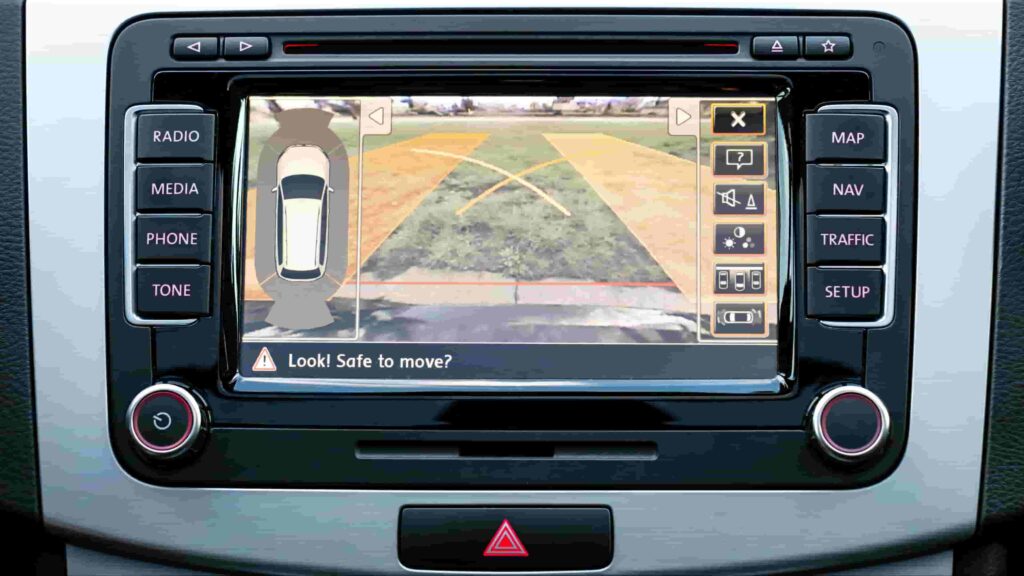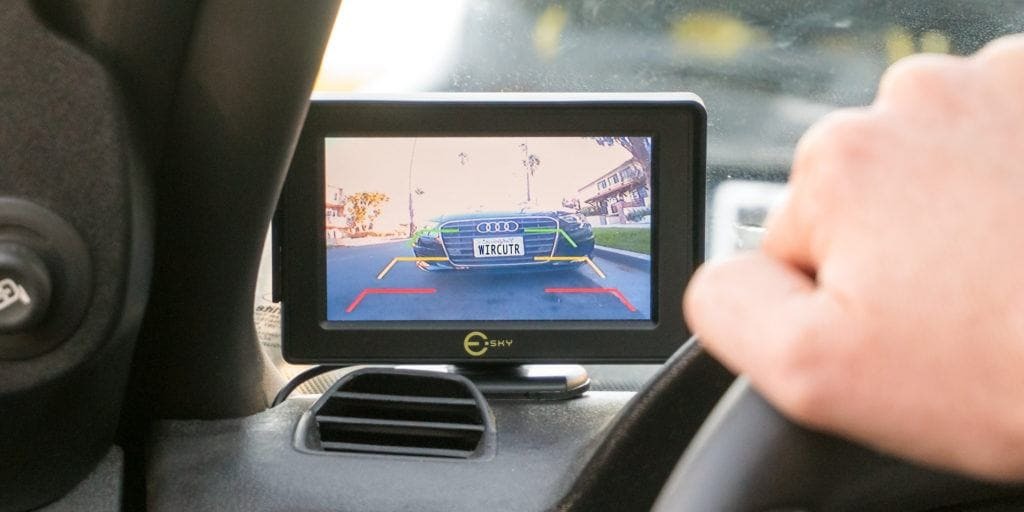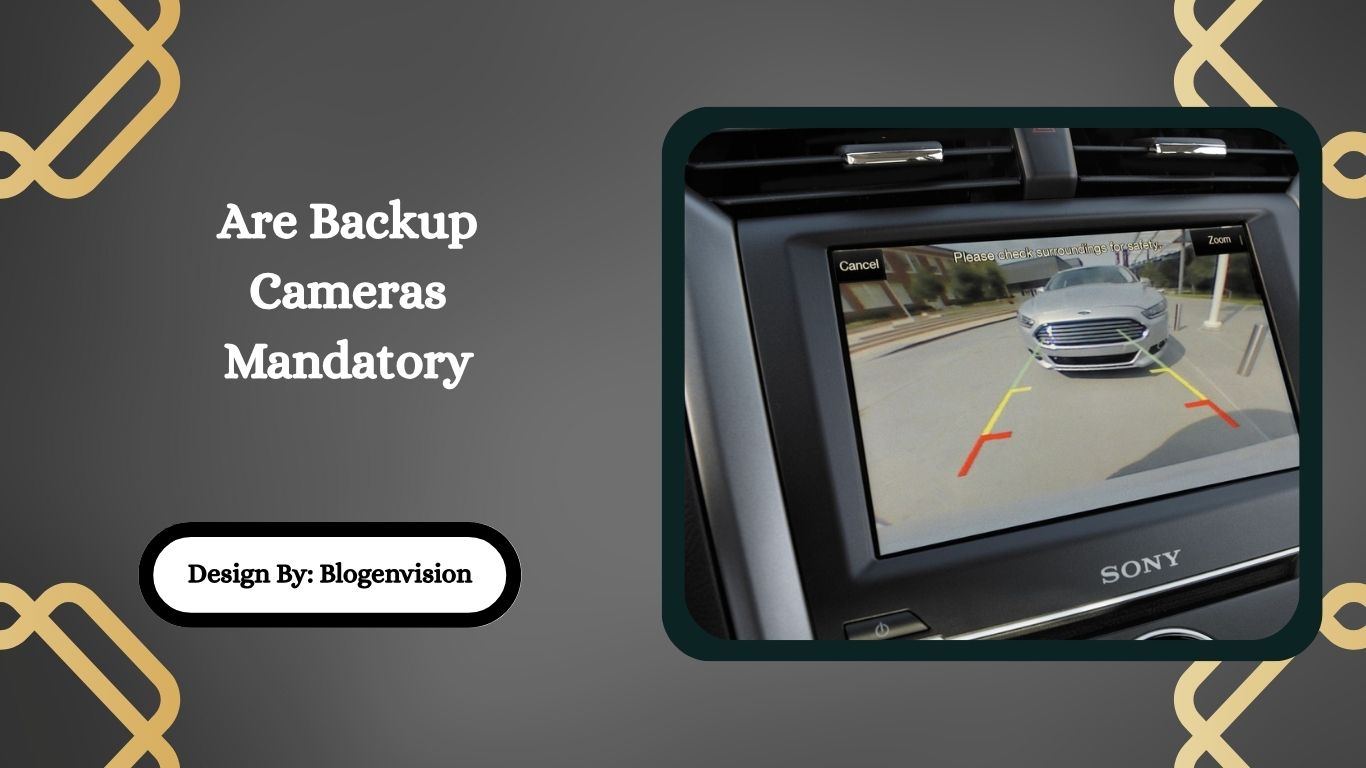Are Backup Cameras Mandatory – Complete Guide!
Yes, backup cameras are mandatory for all new vehicles under 10,000 pounds in the U.S. and Canada since 2018. Similar requirements are being adopted globally to enhance safety.
Backup cameras—also known as rearview or reversing cameras—have become a common safety feature in modern vehicles. These cameras help prevent accidents, particularly when backing out of parking spaces or driveways.
But the question remains: Are backup cameras mandatory in all vehicles? If you’re a driver, buyer, or simply curious about automotive safety regulations, this guide offers everything you need to know.
What Are Backup Cameras?
Backup cameras are small, wide-angle cameras mounted at the rear of a vehicle, typically just above the license plate. They provide a live video feed to the vehicle’s infotainment or rearview mirror display, allowing the driver to see behind the car without turning around. Most modern systems also include dynamic gridlines or proximity warnings to help with parking and obstacle avoidance.
Why Backup Cameras Matter

According to data from the National Highway Traffic Safety Administration (NHTSA), backover accidents cause hundreds of deaths and thousands of injuries annually in the U.S. alone. A significant portion of victims are children and the elderly, who may be difficult to see from the driver’s seat. Backup cameras were introduced as a solution to reduce these tragic incidents.
Key benefits of backup cameras include:
- Reduced blind spots
- Improved parking accuracy
- Enhanced safety for pedestrians and cyclists
- Lower chances of rear-end collisions
Are Backup Cameras Legally Required?
Yes, in many places, backup cameras are now mandatory for most newly manufactured vehicles. The United States, Canada, and parts of the European Union have enacted legislation requiring automakers to include these systems in their vehicles. However, the rules may vary based on region, vehicle type, and year of manufacture.
United States Regulations
In the U.S., backup cameras became mandatory starting May 1, 2018. The regulation was finalized by the NHTSA under a federal mandate aimed at improving road safety.
Key details:
- Applies to all new passenger vehicles weighing less than 10,000 pounds
- Includes cars, SUVs, trucks, and vans
- Requires a field of view covering a 10-foot by 20-foot area directly behind the vehicle
- Must include visual display and image activation within 2 seconds of gear shift into reverse
This rule does not apply to older vehicles, but many drivers choose to install aftermarket systems for additional safety.
Canada
Canada followed suit shortly after the U.S., making backup cameras mandatory on all new light-duty vehicles manufactured after May 2018. The Canadian Motor Vehicle Safety Standards (CMVSS) echo many of the same requirements as the U.S. regulations.
European Union
In the EU, rear visibility requirements fall under General Safety Regulations, which began mandating advanced driver-assistance systems (ADAS), including rearview cameras and sensors, starting 2022. These are primarily required for new vehicle types, with rolling implementation for all new cars by 2024–2026.
Other Countries
- Australia and Japan have not mandated backup cameras for all vehicles but highly recommend them, especially in urban areas.
- Some Asian countries have also started encouraging the adoption of rearview technologies through tax incentives or manufacturing guidelines.
Exemptions and Limitations
Not all vehicles must follow the same rules. Here are some exceptions:
- Older Vehicles: Cars manufactured before the mandate are exempt, though aftermarket installations are available.
- Heavy-Duty Trucks: Vehicles over 10,000 pounds may have different requirements or be exempt altogether.
- Two-Wheelers and Motorcycles: These do not require backup cameras.
- Off-Road or Agricultural Vehicles: Not always included in standard road safety regulations.
Are Aftermarket Backup Cameras Legal?
Yes, aftermarket backup cameras are legal and widely available, especially for vehicles made before 2018. Many retailers sell kits compatible with various car models, and some even offer wireless or mirror-integrated options. Installation by professionals is recommended, although many drivers opt for DIY setups.
Backup Cameras vs. Parking Sensors
While backup cameras offer a visual feed, parking sensors use ultrasonic or radar-based detection to alert the driver about obstacles. Some vehicles combine both technologies for optimal safety. However, only visual systems are legally required under current regulations.
| Feature | Backup Camera | Parking Sensor |
| Visual Feed | Yes | No |
| Audio Alerts | Sometimes | Yes |
| Required by Law | Yes (in many countries) | No |
| Installation Complexity | Medium | Easy to Medium |
| Cost | $100–$500+ | $50–$200+ |
Pros and Cons of Backup Camera Systems
Pros
- Reduces risk of backover accidents
- Helps with parallel parking
- Increases confidence for new drivers
- May boost vehicle resale value
- Required for road safety compliance
Cons
- Can malfunction or freeze in extreme weather
- Limited view in low light unless paired with night vision
- Drivers may become over-reliant on the camera
- Repair or replacement can be costly
How to Maintain a Backup Camera

To ensure consistent performance, follow these maintenance tips:
- Clean the lens regularly to remove dirt or snow
- Check wiring for any signs of wear
- Test display system frequently
- Avoid high-pressure washing near the camera
- Update firmware if supported
The Future of Rearview Technology
Backup cameras are just one part of a growing ecosystem of driver assistance technologies. Future vehicles are likely to include:
- 360-degree surround view systems
- Augmented reality overlays
- Automatic emergency braking (AEB) while reversing
- AI-based object recognition
- Night vision rearview feeds
As autonomous vehicles develop, such technologies will become even more integrated into everyday driving.
FAQs:
1. When did backup cameras become mandatory in the U.S.?
Backup cameras became mandatory for all new light-duty vehicles sold in the U.S. starting May 1, 2018, under a federal NHTSA regulation aimed at reducing backover accidents and improving road safety.
2. Do used cars need to have backup cameras installed?
No, used cars manufactured before 2018 are not required by law to have backup cameras. However, many owners choose to install aftermarket systems for additional safety and modern functionality.
3. Are backup cameras required in Europe?
Yes, under EU General Safety Regulations, new vehicle models must include backup cameras or similar systems starting in 2022, with all new cars required to comply by 2024–2026, depending on implementation phases.
4. Can I install a backup camera myself?
Yes, many aftermarket kits are designed for DIY installation and come with clear instructions. However, professional installation ensures proper alignment, integration, and wiring, especially for complex or wireless camera systems.
5. Do backup cameras work at night or in the rain?
Most modern backup cameras include low-light capabilities or infrared sensors for nighttime use. However, performance may be reduced in heavy rain or fog unless paired with auxiliary lighting or advanced imaging systems.
Conclusion
Backup cameras are no longer just a luxury—they’re a legal requirement in many regions and a critical safety feature for modern driving. From reducing backover accidents to aiding with parking, they play an essential role in protecting pedestrians and drivers alike. While older vehicles aren’t mandated to have them, adding an aftermarket system is a smart upgrade. As automotive technology evolves, backup cameras will continue to advance, making driving safer and smarter for everyone on the road.







